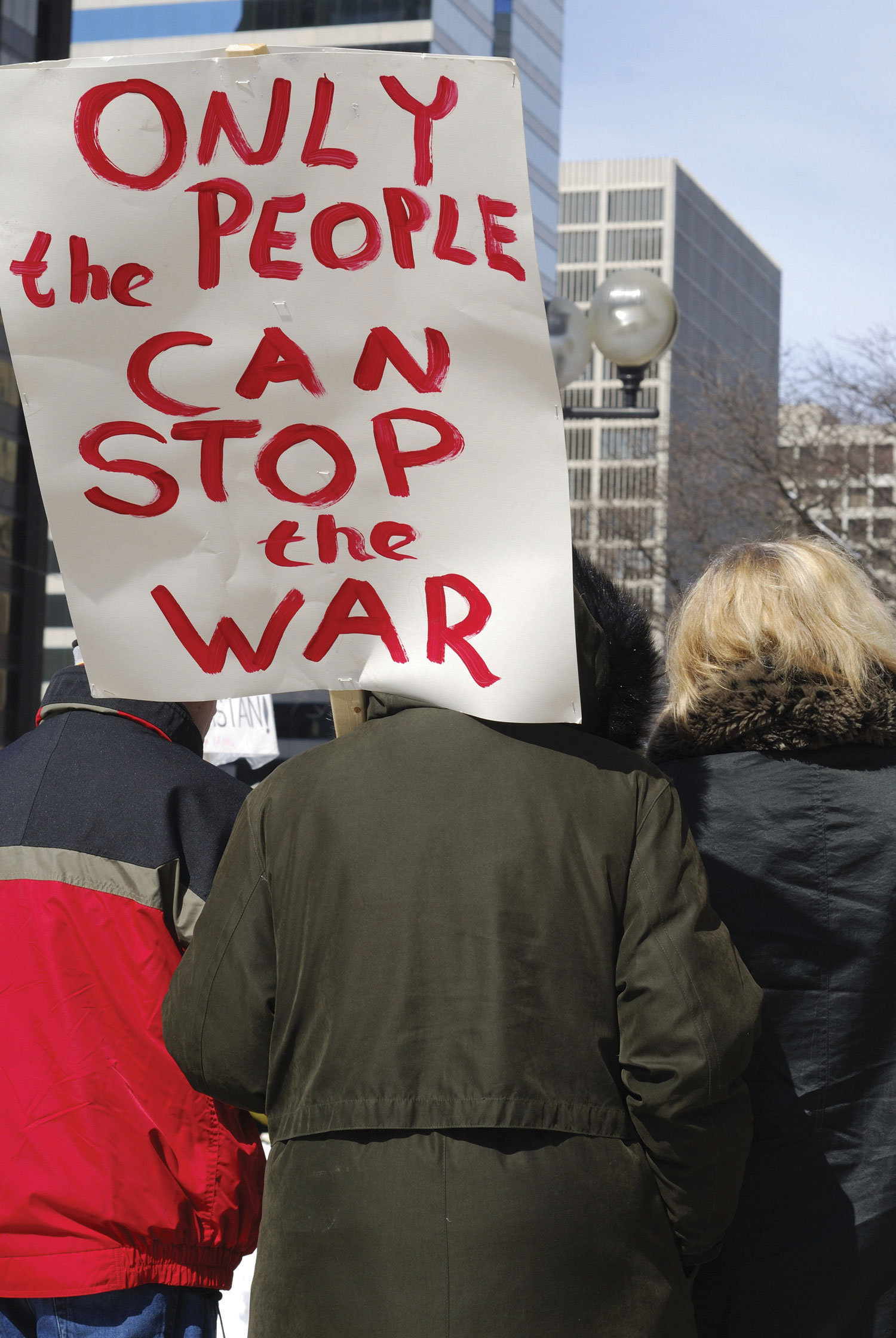Social Problems Continuity and Change Chapter One Pdg
This is "Continuity and Change in Social Problems", section 1.3 from the book A Primer on Social Problems (v. 1.0). For details on it (including licensing), click here.
This book is licensed under a Creative Commons by-nc-sa 3.0 license. See the license for more details, but that basically means you can share this book as long as you credit the author (but see below), don't make money from it, and do make it available to everyone else under the same terms.
This content was accessible as of December 29, 2012, and it was downloaded then by Andy Schmitz in an effort to preserve the availability of this book.
Normally, the author and publisher would be credited here. However, the publisher has asked for the customary Creative Commons attribution to the original publisher, authors, title, and book URI to be removed. Additionally, per the publisher's request, their name has been removed in some passages. More information is available on this project's attribution page.
For more information on the source of this book, or why it is available for free, please see the project's home page. You can browse or download additional books there. To download a .zip file containing this book to use offline, simply click here.
Has this book helped you? Consider passing it on:

Creative Commons supports free culture from music to education. Their licenses helped make this book available to you.

DonorsChoose.org helps people like you help teachers fund their classroom projects, from art supplies to books to calculators.
1.3 Continuity and Change in Social Problems
Learning Objectives
- Explain what is meant by this book's subtitle, "Continuity and Change."
- List the three sources of changes to social problems.
- Describe how the United States compares to other democracies regarding the seriousness of social problems.
This book's subtitle, "Continuity and Change," conveys a theme that will guide every chapter's discussion. Social problems are, first of all, persistent. They have continued for decades and even centuries, and they show no sign of ending anytime soon. In view of social problems' long history, certainty of continuing for some time to come, and serious consequences, it is easy to feel overwhelmed when reading about them, to think that little can be done about them, and even to become a bit depressed. As a result, it is easy for students to come away from social problems courses with a rather pessimistic, "doom and gloom" outlook (Johnson, 2005).Johnson, B. (2005). Overcoming "doom and gloom": Empowering students in courses on social problems, injustice, and inequality. Teaching Sociology, 33, 44–58.

An important source of change in social problems is protest by a social change group or movement.
© Thinkstock
That is why this book stresses the second part of the subtitle, change. Although social problems are indeed persistent, it is also true that certain problems are less serious now than in the past. Change is possible. As just one of many examples, consider the conditions that workers face in the United States. As Chapter 12 "Work and the Economy" discusses, many workers today are unemployed, have low wages, or work in substandard and even dangerous workplaces. Yet they are immeasurably better off than a century ago, thanks to the US labor movement that began during the 1870s. Workers now have the eight-hour day, the minimum wage (even if many people think it is too low), the right to strike, and workplaces that are much safer than when the labor movement began. In two more examples, people of color and women have made incredible advances since the 1960s, even if, as Chapter 3 "Racial and Ethnic Inequality" and Chapter 4 "Gender Inequality" discuss, they continue to experience racial and gender inequality, respectively. To repeat: Change is possible.
How does change occur? One source of change in social problems is social science theory and research. Over the decades, theory and research in sociology and the other social sciences have pointed to the reasons for social problems, to potentially successful ways of addressing them, and to actual policies that succeeded in addressing some aspect of a social problem. Accordingly, the discussion in each chapter of this book is based on sound social science theory and research, and each chapter will present examples of how the findings from sociological and other social science research have either contributed to public policy related to the chapter's social problem or have the potential of doing so.
The actions of individuals and groups may also make a difference. Many people have public-service jobs or volunteer in all sorts of activities involving a social problem: they assist at a food pantry, they help clean up a riverbank, and so forth. Others take on a more activist orientation by becoming involved in small social change groups or a larger social movement. Our nation is a better place today because of the labor movement, the Southern civil rights movement, the women's movement, the gay rights movement, the environmental movement, and other efforts too numerous to mention. According to Frances Fox Piven (2006),Piven, F. F. (2006). Challenging authority: How ordinary people change America. Lanham, MD: Rowman & Littlefield. a former president of the American Sociological Association, it is through such efforts that "ordinary people change America," as the subtitle of her book on this subject reads.
Sharing this view, anthropologist Margaret Mead once said, "Never doubt that a small group of thoughtful, committed citizens can change the world. Indeed, it is the only thing that ever has." Change thus is not easy, but it can and does occur. Eleanor Roosevelt (1960, p. 168)Roosevelt, E. (1960). You learn by living: Eleven keys for a more fulfilling life. New York, NY: Harper & Row. recognized this when she wrote, "Surely, in the light of history, it is more intelligent to hope rather than to fear, to try rather than not to try. For one thing we know beyond all doubt: Nothing has ever been achieved by the person who says, 'It can't be done.'" In the optimistic spirit of these two famous women, we will see examples throughout this book of people making a difference in their jobs, volunteer activities, and involvement in social change efforts.

Many other democracies rank higher than the United States on poverty, health, and other social indicators. For this reason, the United States may have much to learn from their positive examples.
© Thinkstock
Change also occurs in social problems because policymakers (elected or appointed officials and other individuals) pass laws or enact policies that successfully address a social problem. They often do so only because of the pressure of a social movement, but sometimes they have the vision to act without such pressure. It is also true that many officials fail to take action despite the pressure of a social movement, so those who do take action should be applauded. A recent example involves the governor of New York, Andrew Cuomo, who made the legalization of same-sex marriage a top priority for his state when he took office in January 2011. After the New York state legislature narrowly approved same-sex marriage six months later, Cuomo's advocacy was widely credited for enabling this to happen (Barbaro, 2011).Barbaro, M. (2011, June 6). Behind NY gay marriage, an unlikely mix of forces. New York Times, p. A1.
A final source of change is the lessons learned from other nations' experiences with social problems. Sometimes these lessons for the United States are positive ones, as when another nation has tackled a social problem more successfully than the United States, and sometimes these lessons are negative ones, as when another nation has a more serious problem than the United States and/or has made mistakes in addressing this problem. The United States can learn from the good examples of some other nations, and it can also learn from the bad ones. For this reason, each chapter of this book discusses such examples. In this regard, the United States has much to learn from the experiences of other long-standing democracies like Canada, the nations of Western Europe, and Australia and New Zealand. Despite its great wealth, the United States ranks below most of its democratic peers on many social indicators, such as poverty, health, and so on (Holland, 2011; Russell, 2011).Holland, J. (2011, June 15). 9 countries that do it better: Why does Europe take better care of its people than America? AlterNet. Retrieved from http://www.alternet.org/story/151312/151319_countries_that_do_it_better%151313A_why_does_europe_take_better_care _of_its_people_than_america?page=151311; Russell, J. W. (2011). Double standard: Social policy in Europe and the United States (2nd ed.). Lanham, MD: Rowman & Littlefield. A major reason for this difference is that other democratic governments are far more proactive, in terms of attention and spending, than the US federal and state governments in helping their citizens. Because the United States has much to learn from their positive example, this book's chapters all discuss policies that enable other democracies to address certain social problems far more successfully than the United States has addressed them.
Key Takeaways
- Social problems are persistent, but they have also changed over the years, and many social problems are less serious now than in the past.
- Three sources of change to social problems include social science research, the efforts of citizens acting alone or especially in social change groups, and the experiences of other nations.
For Your Review
- Have you participated in any volunteer or other activity involving a social problem? If so, why did you do so? If not, why have you not participated in such an effort?
- Do you share Eleanor Roosevelt's optimism that social change is possible? Why or why not?
Source: https://2012books.lardbucket.org/books/a-primer-on-social-problems/s04-03-continuity-and-change-in-socia.html
0 Response to "Social Problems Continuity and Change Chapter One Pdg"
Post a Comment